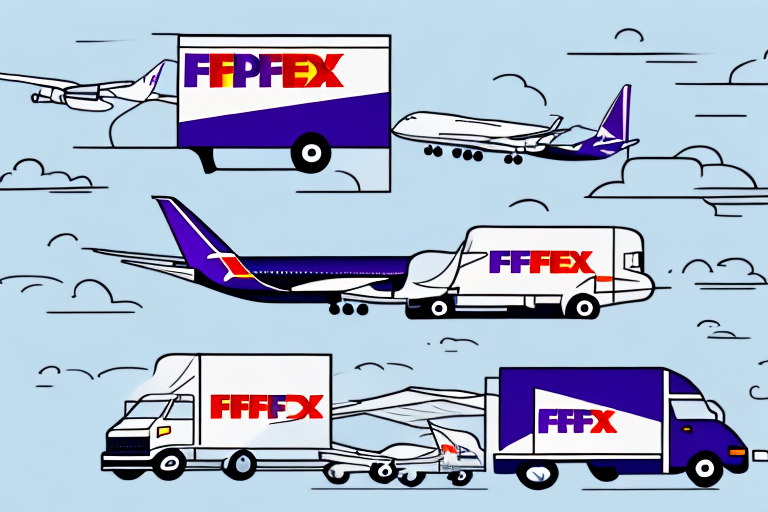Creating a Central Fulfillment Strategy for Your Business
In today’s competitive market, a robust fulfillment strategy is essential for business success. A well-structured fulfillment strategy ensures that orders are processed seamlessly and efficiently, leading to satisfied customers and fostering repeat business. But what exactly constitutes a central fulfillment strategy, and why is it so pivotal? This article delves into the core components of a central fulfillment strategy and offers actionable insights to help you implement one effectively for your business.
Why a Central Fulfillment Strategy is Critical for Business Success
A central fulfillment strategy is crucial because it ensures consistent and high-quality order fulfillment across all sales channels. Whether orders originate from your website, retail stores, or third-party marketplaces like Amazon, a centralized system guarantees that each order is managed effectively and efficiently. In today’s fast-paced business environment, customers expect rapid and accurate order fulfillment, making centralization more important than ever.
According to a McKinsey report, businesses with centralized fulfillment operations experience up to a 20% reduction in operational costs. By centralizing your fulfillment process, you can eliminate redundancies and streamline order management, thereby lowering overall costs and boosting profitability. Additionally, a centralized system enhances your ability to offer faster and more reliable shipping, keeping you ahead of the competition.
Furthermore, a central fulfillment strategy provides enhanced visibility into inventory levels and order statuses. Real-time tracking of inventory and orders allows for informed decision-making, helping you avoid stockouts and overstocking, which can lead to lost sales and increased holding costs.
Understanding the Key Elements of a Central Fulfillment Strategy
Implementing a successful central fulfillment strategy involves several key elements:
- Order Management System: The cornerstone of a central fulfillment strategy is a robust order management system (OMS). An OMS enables real-time tracking and management of all orders, ensuring efficient processing and fulfillment.
- Inventory Management: Effective inventory management is vital. Utilizing an advanced inventory management system helps in tracking stock levels accurately and ensures that you have sufficient inventory to meet customer demand.
- Shipping and Fulfillment: A streamlined shipping and fulfillment process is essential for timely and accurate deliveries. This includes selecting reliable shipping carriers, managing returns, and handling exchanges efficiently.
Additionally, exceptional customer service forms a critical component of a central fulfillment strategy. A dedicated team should be in place to handle customer inquiries, complaints, and returns promptly and courteously.
Monitoring and analyzing fulfillment performance is also essential. By regularly reviewing key performance indicators (KPIs), you can identify areas for improvement and make necessary adjustments to enhance your fulfillment operations.
How to Assess Your Business Needs and Objectives for a Central Fulfillment Strategy
Before implementing a central fulfillment strategy, it’s important to assess your business needs and objectives. Consider the following questions:
- What are your fulfillment goals and objectives?
- What challenges are you currently facing in your fulfillment process?
- What resources are available for implementing a central fulfillment strategy?
- What are your customers’ expectations regarding order fulfillment?
Answering these questions provides clarity on what your business requires to successfully implement a central fulfillment strategy. Once you have a clear understanding, you can evaluate different fulfillment solutions, including software options, warehouse management systems, and shipping carriers, to find the best fit for your needs.
It's also important to consider the impact of a central fulfillment strategy on your employees and customers. Providing training and support to your staff ensures they are comfortable with new processes and technologies. Communicating changes to your customers helps manage their expectations and ensures a smooth transition.
Choosing the Right Technology and Tools for Your Central Fulfillment Strategy
Selecting the appropriate technology and tools is critical for supporting your central fulfillment strategy. Consider the following tools:
- Order Management Software: Choose a solution that offers real-time inventory visibility and allows you to manage orders across all sales channels seamlessly.
- Shipping Software: Opt for software that integrates with your OMS and streamlines the shipping and fulfillment process.
- Inventory Management Software: Utilize software that accurately tracks inventory levels and manages stock across all channels.
Scalability is another important factor to consider. As your business grows, your fulfillment system should be able to handle increased order volumes and inventory levels. Additionally, look for customizable solutions that can be tailored to meet your specific business requirements. Investing in the right technology ensures your central fulfillment strategy remains efficient, effective, and adaptable to future growth.
Training Your Team to Implement and Execute Your Central Fulfillment Strategy
Implementing a central fulfillment strategy goes beyond selecting the right tools and technology. It's crucial to train your team to effectively execute the strategy. This involves:
- Training your team on new tools and technologies.
- Ensuring your team understands the importance of a central fulfillment strategy.
- Providing clear guidelines and processes for managing orders, inventory, and shipping.
- Regularly reviewing and analyzing data to identify areas for improvement.
Fostering a culture of collaboration and communication within your team is also important. Encourage open dialogue and feedback, promote cross-functional training, and facilitate knowledge sharing. This approach equips your team to identify and address any issues that may arise during the implementation and execution of your central fulfillment strategy.
The Benefits of Outsourcing Your Central Fulfillment Operations
If your business lacks the internal resources to implement a central fulfillment strategy, outsourcing your fulfillment operations might be a viable option. Benefits of outsourcing include:
- Access to advanced technology and expertise.
- Reduced operational costs and improved scalability.
- Increased flexibility and agility.
Outsourcing allows you to focus on core business activities such as product development, marketing, and customer service by delegating fulfillment responsibilities to a third-party provider. Additionally, outsourcing provides access to a global network of suppliers and partners, enabling you to expand your reach and enter new markets without significant investment in additional resources or infrastructure.
Measuring the Success of Your Central Fulfillment Strategy: Key Metrics to Track
Tracking key metrics is essential to ensure that your central fulfillment strategy is achieving the desired results. Important metrics to measure include:
- Order accuracy
- On-time delivery rate
- Inventory turnover rate
- Shipping cost per order
- Customer satisfaction rate
Additionally, monitoring the return rate is crucial. A high return rate may indicate issues with your fulfillment process or product quality. By tracking returns, you can identify problem areas and implement changes to reduce returns.
Tracking the average order value also provides insights into customer purchasing behavior. A low average order value might suggest that customers are not finding what they need or that your pricing strategy needs adjustment. Analyzing this metric helps you make informed decisions to enhance your central fulfillment strategy and increase revenue.
Common Challenges and Pitfalls to Avoid When Implementing a Central Fulfillment Strategy
While a central fulfillment strategy offers numerous benefits, there are common challenges and pitfalls to be aware of:
- Employee resistance to change
- Technical implementation challenges
- Difficulty integrating with existing systems
Another challenge is the potential for increased shipping costs. Centralizing fulfillment operations may lead to longer shipping distances for some customers, resulting in higher costs. To mitigate this, analyze shipping costs carefully and consider alternative options, such as regional fulfillment centers, to balance cost and delivery speed.
Case Studies: Real-Life Examples of Successful Central Fulfillment Strategies in Action
Examining real-life case studies can provide valuable insights into successful central fulfillment strategies. Notable companies that have effectively implemented central fulfillment strategies include:
- Amazon: By centralizing their fulfillment operations, Amazon offers faster and more reliable shipping to customers. Their centralized approach optimizes inventory management and reduces operational costs.
- Zara: Zara centralizes their distribution centers, enabling them to quickly respond to changes in demand and expedite product delivery to the market. This strategy helps Zara maintain a competitive edge in the fashion industry.
- Walmart: With a centralized fulfillment model, Walmart efficiently manages inventory across its vast network of stores and online platforms, ensuring consistent product availability and quick delivery times.
- Target: Target leverages centralized fulfillment centers to streamline their order processing and delivery, enhancing the overall customer experience.
- Best Buy: Centralizing fulfillment operations allows Best Buy to manage inventory effectively and provide timely deliveries, contributing to high customer satisfaction rates.
Future-Proofing Your Business with a Dynamic, Evolving Central Fulfillment Strategy
Your central fulfillment strategy should be dynamic and adaptable to changing business landscapes. To future-proof your strategy, consider the following:
- Continuously review and assess your fulfillment strategy.
- Stay updated with new technologies and tools.
- Maintain flexibility and agility in your approach.
Prioritizing sustainability is another important aspect of future-proofing your central fulfillment strategy. As consumers become more environmentally conscious, incorporating sustainable practices can attract and retain customers. This includes using eco-friendly packaging materials, optimizing transportation routes to reduce emissions, and implementing energy-efficient technologies in your warehouses.
Conclusion: Key Takeaways for Building a Strong, Effective Central Fulfillment Strategy
Developing a strong and effective central fulfillment strategy is vital for any business aiming to thrive in today’s fast-paced market. By focusing on essential elements such as a robust order management system, efficient inventory management, and streamlined shipping processes, you can ensure that your fulfillment operations are both efficient and customer-centric. Selecting the right technology and tools, along with comprehensive team training, is crucial for successful implementation. Remember, a central fulfillment strategy is not a one-time project but an ongoing process that requires regular assessment and adaptation to stay competitive. By continuously refining your strategy, you can enhance operational efficiency, reduce costs, and improve customer satisfaction, positioning your business for long-term success.






















